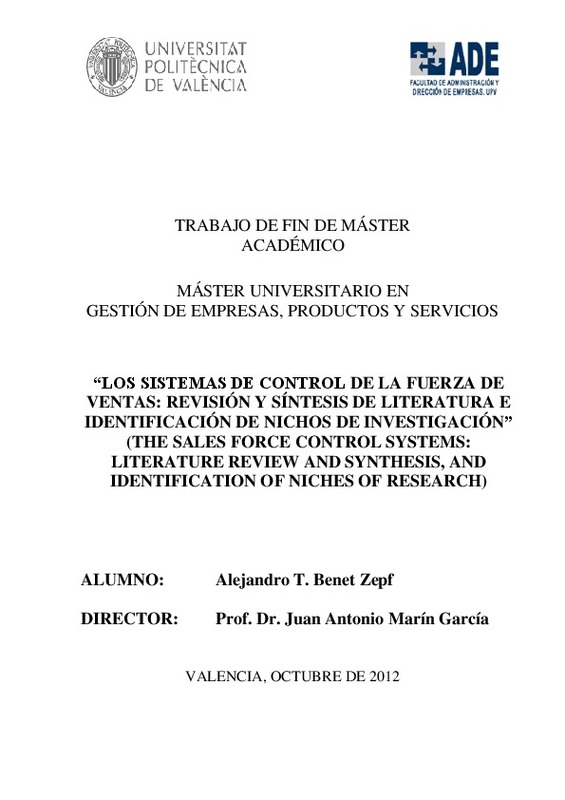JavaScript is disabled for your browser. Some features of this site may not work without it.
Buscar en RiuNet
Listar
Mi cuenta
Estadísticas
Ayuda RiuNet
Admin. UPV
Los sistemas de control de la fuerza de ventas: revisión y síntesis de literatura e identificación de nichos de investigación
Mostrar el registro completo del ítem
Benet Zepf, AT. (2012). LOS SISTEMAS DE CONTROL DE LA FUERZA DE VENTAS: REVISIÓN Y SÍNTESIS DE LITERATURA E IDENTIFICACIÓN DE NICHOS DE INVESTIGACIÓN (THE SALES FORCE CONTROL SYSTEMS: LITERATURE REVIEW AND SYNTHESIS, AND IDENTIFICATION OF NICHES OF RESEARCH). http://hdl.handle.net/10251/28021.
Por favor, use este identificador para citar o enlazar este ítem: http://hdl.handle.net/10251/28021
Ficheros en el ítem
Metadatos del ítem
| Título: | Los sistemas de control de la fuerza de ventas: revisión y síntesis de literatura e identificación de nichos de investigación | |||
| Otro titulo: |
|
|||
| Autor: | ||||
| Director(es): | ||||
| Entidad UPV: |
|
|||
| Fecha acto/lectura: |
|
|||
| Resumen: |
[ES] El objetivo de esta TFM de la modalidad "académico" es el estudio y la adecuación de los
sistemas utilizados para controlar a la fuerza de ventas: los que usan el resultado como
referencia y los que tienen en cuenta ...[+]
[EN] The objective of this paper is to analyze the suitability of the systems used to control the
sales force: those that use the results as a reference and those that take into account aspects
related to the behavior ...[+]
|
|||
| Palabras clave: |
|
|||
| Derechos de uso: | Reconocimiento - No comercial - Sin obra derivada (by-nc-nd) | |||
| Editorial: |
|
|||
| Titulación: |
|
|||
| Tipo: |
|
recommendations
Este ítem aparece en la(s) siguiente(s) colección(ones)
-
ADE - Trabajos académicos [3699]
Facultad de Administración y Dirección de Empresas





![MS Powerpoint file [PP]](/themes/UPV/images/mspowerpoint.png)


